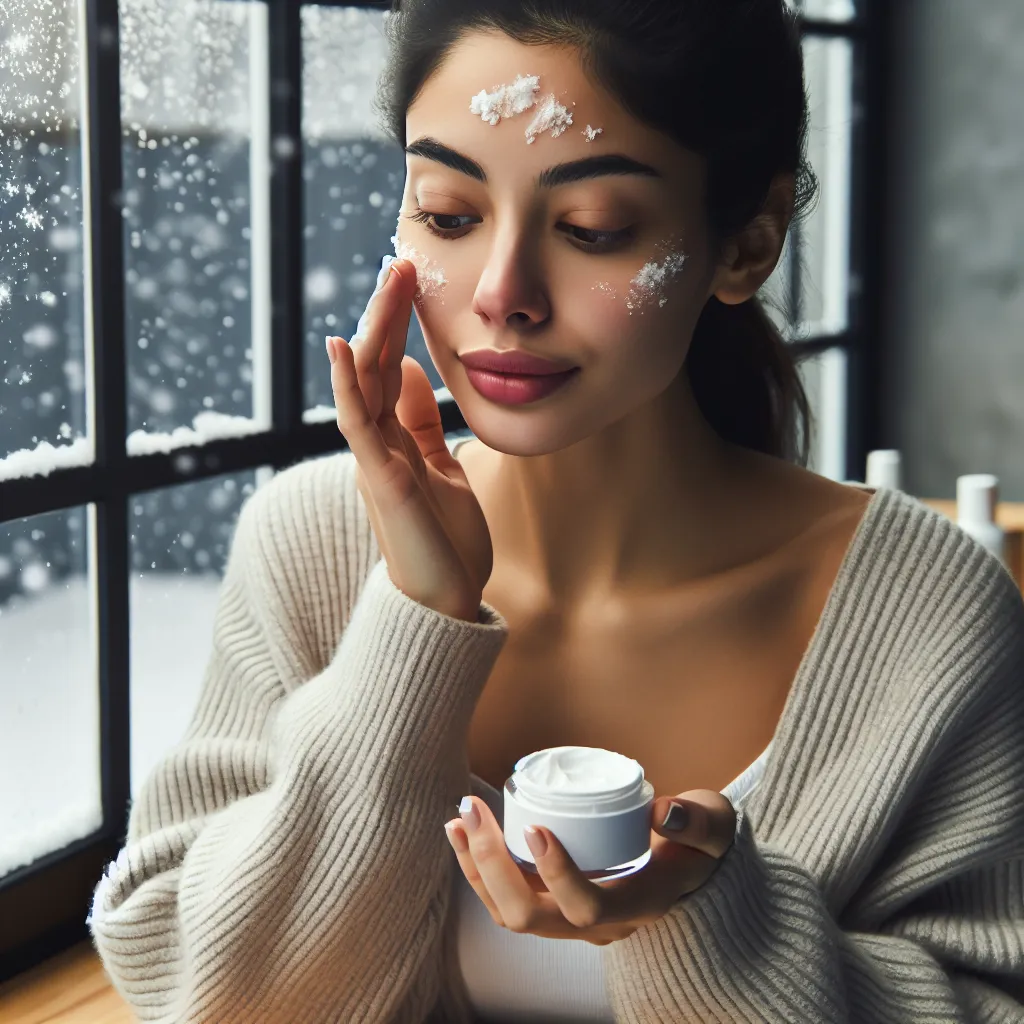As winter approaches, many individuals face the challenge of maintaining healthy skin amidst harsh weather conditions. Dry air, cold temperatures, and indoor heating can strip moisture, leading to skin irritation and discomfort. This article provides practical strategies and product recommendations to help you effectively nourish and hydrate your skin during the cold winter months.
By understanding your skin type, selecting the right ingredients, and adopting a comprehensive skincare routine, you can mitigate the effects of winter’s harshness. Dive into the insights and tips outlined here to keep your skin resilient, hydrated, and healthy all season long.
Table of Contents
Winter Skin Care Essentials
As the temperatures drop and the chill of winter sets in, our skin often bears the brunt of the seasonal changes. The cold air, combined with indoor heating, can lead to dryness, tension, and irritation. Thus, adapting our skin care routine to meet the challenges of winter is essential for maintaining a healthy, radiant complexion. Here, we explore the fundamental winter skin care essentials that can help you navigate this harsh season effectively.
Understanding Winter Skin Challenges
Winter conditions pose unique challenges that necessitate a thoughtful approach to skin care. During these months, the air tends to lose its moisture, which can lead to a condition known as transepidermal water loss (TEWL). This results in skin that feels tight, rough, and often looks dull.
- Low Humidity: Cold air has low humidity levels, which can sap moisture from the skin.
- Indoor Heating: Central heating can further dry out indoor air, exacerbating skin dryness.
- Hot Showers: Although soothing, prolonged exposure to hot water can strip the skin of its natural oils.
Recognizing these factors is the first step towards implementing an effective winter skin care regimen.
Essential Products for Winter Skin Care
Choosing the right products is crucial for combating winter dryness. Here are some key elements to include in your winter skin care arsenal:
- Hydrating Cleanser: Opt for cream-based, gentle cleansers that don’t strip the skin of its natural oils. Look for ingredients like glycerin and hyaluronic acid that help maintain moisture levels.
- Rich Moisturizers: Use thicker creams or balms containing occlusives such as shea butter, ceramides, and petrolatum. These ingredients form a barrier that locks in moisture.
- Humidifiers: While not a topical product, using a humidifier in your home can significantly increase moisture levels in the air, helping to keep your skin hydrated from within.
- SPF Protection: Even in winter, UV rays can harm your skin. A broad-spectrum sunscreen with at least SPF 30 should be applied daily, especially if you spend time outdoors.
DIY Remedies for Winter Skin Nourishment
In addition to commercial products, many natural remedies can effectively hydrate and nourish winter-damaged skin. Here are a few popular options:
- Honey Mask: Honey is a natural humectant, meaning it attracts moisture to the skin. Apply a thin layer and leave it on for 20 minutes before rinsing.
- Oatmeal Baths: Ground oats can soothe irritated skin. Add them to your bath for a calming effect.
- Avocado Oil: Rich in fatty acids and vitamins, avocado oil can be applied directly to areas of dryness or irritation, enhancing skin barrier function.
Expert Tips for Winter Skin Care
Maximizing the impact of your winter skin care routine requires a few extra strategies:
- Layering Products: Apply products from thinnest to thickest consistency. A hydrating serum can provide an extra layer of moisture beneath your moisturizer.
- Mind Your Diet: Eat foods rich in omega-3 fatty acids, like walnuts and salmon, to nourish your skin from the inside out.
- Stay Hydrated: Drink plenty of water during winter. Dehydration can lead to drier skin, lessening the effectiveness of even the best skin care products.
These winter skin care essentials not only fend off dryness but also promote overall skin health, making you look and feel your best throughout the season. For more comprehensive insights on maintaining skin health, consider visiting the American Academy of Dermatology for expert advice on effective skin care routines.
Choosing the Right Winter Cream
As winter approaches and temperatures drop, selecting the right cream to protect and nourish your skin becomes crucial. The dry and chilly air can lead to moisture loss, making your skin more prone to irritation and dryness. With various products flooding the market, it’s essential to understand what factors to consider when choosing the perfect winter cream. Here’s a comprehensive guide to help you make an informed decision.
Understanding Your Skin Type
The first step in choosing an effective winter cream is understanding your skin type. Different skin types—oily, dry, combination, and sensitive—require unique moisturizing properties:
- Dry Skin: Look for creams that contain ingredients like hyaluronic acid or ceramides that provide deep hydration.
- Oily Skin: Opt for lightweight, non-comedogenic formulas that won’t clog pores. Gel-based creams or lotions are usually ideal.
- Combination Skin: A balanced cream that hydrates dry areas while being light on oily zones is essential. Products that offer hydration without heaviness are beneficial.
- Sensitive Skin: Choose creams labeled as hypoallergenic or free of fragrance and other irritants to avoid inflammation.
Key Ingredients for Winter Creams
When picking a winter cream, consider the ingredients. The best winter creams often include the following beneficial components:
- Humectants: Ingredients like glycerin and urea draw moisture into the skin. They are essential for keeping your skin hydrated in harsh winter conditions.
- Emollients: Oils such as jojoba, almond, and shea butter fill in the gaps between skin cells, providing a smoother surface and preventing water loss.
- Occlusives: Ingredients like petrolatum and beeswax create a protective barrier that seals moisture in and shields against wind and cold.
- Antioxidants: Vitamin C and E, along with botanical extracts, combat oxidative stress from environmental factors, helping maintain skin health.
Product Texture Matters
The texture of your winter cream can significantly impact its effectiveness. Typically, richer, creamier products are better suited for colder months. Consider the following:
- Creams: Thicker formulations provide extensive moisture and are ideal for very dry skin.
- Lotion: Lighter lotions absorb quickly and are better for daytime use, especially for oily skin types.
- Balm: For those in extremely cold climates, a balm might be necessary. These products are generally thicker and provide a more substantial barrier against environmental aggressors.
Patch Testing
Before committing to a winter cream, it’s wise to conduct a patch test, especially for those with sensitive skin. Apply a small amount on an inconspicuous area like your wrist or behind your ear and monitor for any adverse reactions over 24-48 hours. This step can prevent discomfort and ensure that the product will work effectively for your skin type.
Environmental Considerations
Consider your living conditions and lifestyle when selecting a winter cream. For instance:
- If you spend considerable time outdoors, a richer cream with occlusive properties should be your go-to to shield against harsh wind and cold.
- For indoor environments, especially heated spaces that can exacerbate dryness, a good balance of humectants and emollients would suffice to maintain skin hydration.
Reputable Brands and Products
When navigating the plethora of winter creams available, always opt for reputable brands known for their quality. Brands such as CeraVe, Eucerin, and Vichy offer products with dermatologist-recommended formulations that cater to various skin types and concerns. Always read reviews and seek products that feature full ingredient disclosures to ensure safety and efficacy.
In summary, choosing the right winter cream involves understanding your unique skin type, familiarizing yourself with beneficial ingredients, considering the product texture, and being mindful of your environment. By doing so, you can keep your skin healthy and hydrated throughout the cold winter months, ensuring that it looks and feels its best.
Tips for Maximum Hydration
When winter approaches, the cold air outside and dry indoor heating can wreak havoc on your skin, leading to an urgent need for hydration. However, achieving maximum hydration goes beyond simply applying moisturizers; it requires a comprehensive approach that incorporates products, habits, and lifestyle changes. Here are several effective tips to help you lock in hydration and keep your skin plump and radiant throughout the winter months.
1. Choose the Right Ingredients
When selecting hydrating products, opt for those that contain humectants—substances that attract moisture from the environment or deeper layers of your skin. Look for ingredients like:
- Hyaluronic Acid: Known for its ability to hold 1,000 times its weight in water, it’s a powerhouse for delivering hydration.
- Glycerin: Another effective humectant that draws moisture in, helping to keep your skin supple.
- Aloe Vera: Not only hydrating but also soothing, it can help calm irritated winter skin.
Additionally, oils such as jojoba or argan can provide a moisture seal, preventing water loss after the initial hydration step.
2. Adopt a Hydration Routine
Creating a structured skincare routine can significantly enhance hydration levels. Consider the following regimen:
- Cleanse: Use a gentle cleanser that does not strip your skin of its natural oils. Cream-based or hydrating cleansers are ideal.
- Exfoliate: Regularly exfoliating your skin helps remove dead skin cells, allowing your moisturizers to penetrate better. Aim for gentle exfoliation once a week.
- Moisturize: Apply a hydrating moisturizer immediately after cleansing to lock in moisture. Look for thicker formulations during winter.
- Hydrate Overnight: Incorporate a nighttime hydrating serum or oil to nourish your skin while you sleep.
By following this routine, you create an effective barrier against the drying effects of winter.
3. Stay Hydrated from the Inside Out
While topical applications are key, it’s equally important to maintain internal hydration. Drink plenty of water throughout the day, and consider incorporating these hydrating foods into your diet:
- Cucumbers: Composed of 95% water, they are perfect for hydration.
- Watermelon: Refreshing and hydrating, this fruit is rich in vitamins A and C.
- Oranges: Not only hydrating but also loaded with vitamin C, they can boost your skin’s radiance.
Eating a balanced diet rich in fruits, vegetables, nuts, and healthy fats can enhance your skin’s hydration levels and overall health.
4. Use a Humidifier
Indoor heating can significantly reduce humidity levels in the air, leading to drier skin. Investing in a humidifier can drastically improve your home’s atmosphere. It adds moisture back into the air, countering the drying effects of heat during the winter months. Aim to keep humidity levels between 30% and 50% for optimal skin hydration.
5. Be Mindful of Hot Showers
While it may be tempting to indulge in hot showers during the cold winter months, prolonged exposure to hot water can strip the skin of its natural oils. Instead, consider:
- Taking warm showers, ensuring to limit your time to 10-15 minutes.
- Following up with a moisturizer immediately after drying off to trap moisture in your skin.
This practice can significantly help maintain your skin’s moisture barrier.
6. Don’t Forget to Protect
Even in winter, sunscreen is essential. UV rays can still damage your skin, even on cloudy days. Use a daily sunscreen with at least SPF 30 to protect your skin. This not only prevents sunburn but also aids in preventing moisture loss.
7. Tailor Your Products to Your Skin Type
Everyone’s skin is unique, and understanding your specific needs is crucial for maximum hydration. Whether you have oily, dry, or combination skin, choose products formulated specifically for your skin type. For example:
- If you have dry skin, look for creams that are rich and emollient.
- For oily or combination skin, lightweight gels or lotions can provide hydration without adding excess oil.
Implementing these tips can significantly enhance your skin’s hydration levels and combat the harsh conditions of winter. A consistent routine that addresses both external and internal factors will yield the best results.
To delve deeper into maintaining healthy skin during the winter months, visit Healthline for expert insights and advice.
Nourishing Your Skin During the Cold
As winter’s chill envelopes us, maintaining the health and vitality of your skin becomes a considerable challenge. The dry, cold air not only wreaks havoc on your complexion but can also lead to uncomfortable dryness, irritation, and even cracking. Therefore, it’s essential to adopt a strategic approach to nourish your skin during these harsh months, ensuring it remains healthy and radiant.
Understanding Your Skin Type
Before diving into specific products and strategies, it’s crucial to understand your skin type. Knowing whether you have oily, dry, combination, or sensitive skin can influence your choice of products and routines. For instance:
- Oily skin: While it might be counterintuitive, oily skin also requires hydration. Opt for non-comedogenic creams that won’t clog pores.
- Dry skin: Look for rich creams and occlusives that create a barrier to lock in moisture.
- Combination skin: Balance is key; use lightweight products where the skin is oily and richer creams for dry patches.
- Sensitive skin: Choose fragrance-free products and always perform a patch test to avoid irritation.
Key Ingredients for Nourishment
When selecting skincare products, prioritize formulations rich in beneficial ingredients. Here are some top choices:
- Hyaluronic Acid: This superstar ingredient attracts moisture, holding up to 1000 times its weight in water, making it perfect for keeping skin hydrated.
- Glycerin: A natural humectant that pulls moisture from the environment into your skin, glycerin is essential for maintaining hydration levels.
- Oils: Consider plant-based oils such as jojoba, argan, or avocado oil, which not only provide intense moisture but also help create a barrier against harsh weather.
- Shea Butter: Rich in vitamins A and E, shea butter is known for its excellent emollient properties and can soothe and nourish very dry skin.
- Ceramides: These lipids help restore the skin barrier, essential for preventing moisture loss during the cold.
Hydrating Routine Adjustments
As the temperature drops, it’s time to adjust your skincare routine accordingly. Here are some essential adjustments to consider:
- Switch to a thicker moisturizer: Your summer gel-based creams may not be sufficient in winter. Instead, choose a thicker, more emollient formula.
- Incorporate an oil: Adding a facial oil to your nighttime routine can provide extra nourishment. Try applying it over your moisturizer for maximum effect.
- Don’t skip the SPF: Even on cloudy winter days, UV rays can harm your skin. Use a broad-spectrum sunscreen as part of your daily regimen.
- Layer your products: Start with a hydrating serum, followed by moisturizer and an oil to lock everything in.
Diet and Hydration for Skin Health
Your skincare routine is only part of the equation. Nourishing your skin from the inside out is equally crucial. Ensure you’re drinking plenty of water and consuming foods rich in essential fatty acids, antioxidants, and vitamins. Incorporating foods like:
- Fatty fish: Salmon and mackerel are packed with omega-3 fatty acids.
- Nuts and seeds: Walnuts and chia seeds provide healthy fats that maintain skin elasticity.
- Leafy greens: Spinach and kale are rich in vitamins A, C, and E, crucial for skin health.
- Fruits: Berries are packed with antioxidants that protect the skin from free radical damage.
For further insights on how nutrition impacts skin health, check out this Healthline article that provides extensive information on the best foods for maintaining a glowing complexion.
Conclusion
Incorporating these nourishing strategies into your winter skincare routine ensures your skin can withstand the elements while maintaining its health and beauty. The right products combined with appropriate lifestyle choices can make all the difference in how your skin appears and feels throughout the colder months. Prepare to embrace winter with glowing, hydrated skin!
To maintain healthy and hydrated skin during winter, it’s crucial to understand your skin type—whether oily, dry, combination, or sensitive—and choose products accordingly. Look for creams rich in humectants like hyaluronic acid and glycerin, which attract moisture, as well as emollients like shea butter and ceramides to lock it in. Layering these products effectively, such as starting with a hydrating serum followed by a thicker moisturizer and facial oil, can enhance hydration.
Additionally, consider adjusting your skincare routine to incorporate a humidifier to counteract dry indoor air, and maintain internal hydration by drinking plenty of water and consuming foods rich in omega-3 fatty acids, antioxidants, and vitamins. Don’t forget to protect your skin from UV damage year-round by using sunscreen daily. Such holistic measures will ensure your skin remains radiant and nourished throughout the cold months.













